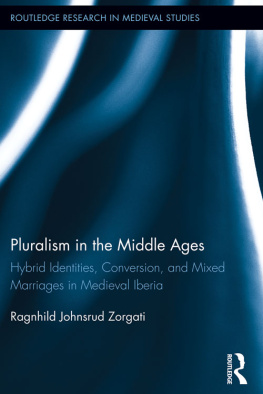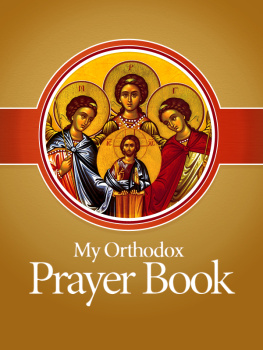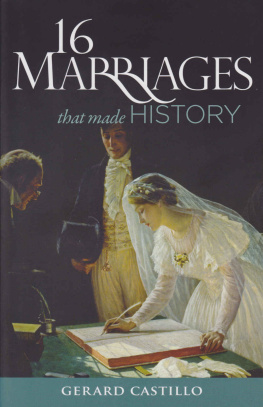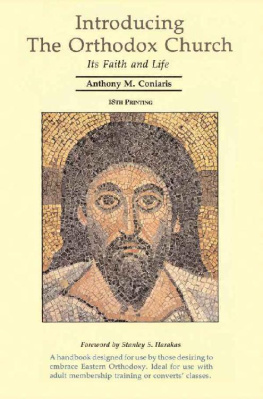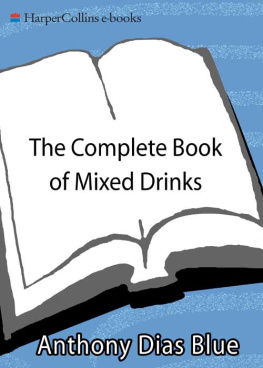Roeber Anthony - Mixed Marriages: An Orthodox History
Here you can read online Roeber Anthony - Mixed Marriages: An Orthodox History full text of the book (entire story) in english for free. Download pdf and epub, get meaning, cover and reviews about this ebook. year: 2018, publisher: Saint Vladimirs Seminary Press, genre: Religion. Description of the work, (preface) as well as reviews are available. Best literature library LitArk.com created for fans of good reading and offers a wide selection of genres:
Romance novel
Science fiction
Adventure
Detective
Science
History
Home and family
Prose
Art
Politics
Computer
Non-fiction
Religion
Business
Children
Humor
Choose a favorite category and find really read worthwhile books. Enjoy immersion in the world of imagination, feel the emotions of the characters or learn something new for yourself, make an fascinating discovery.

- Book:Mixed Marriages: An Orthodox History
- Author:
- Publisher:Saint Vladimirs Seminary Press
- Genre:
- Year:2018
- Rating:3 / 5
- Favourites:Add to favourites
- Your mark:
- 60
- 1
- 2
- 3
- 4
- 5
Mixed Marriages: An Orthodox History: summary, description and annotation
We offer to read an annotation, description, summary or preface (depends on what the author of the book "Mixed Marriages: An Orthodox History" wrote himself). If you haven't found the necessary information about the book — write in the comments, we will try to find it.
Mixed Marriages: An Orthodox History — read online for free the complete book (whole text) full work
Below is the text of the book, divided by pages. System saving the place of the last page read, allows you to conveniently read the book "Mixed Marriages: An Orthodox History" online for free, without having to search again every time where you left off. Put a bookmark, and you can go to the page where you finished reading at any time.
Font size:
Interval:
Bookmark:

Mixed Marriages
An Orthodox History
A.G. Roeber
st vladimirs seminary press
yonkers, new york

copyright 2018 by
st vladimirs seminary press
575 Scarsdale Road, Yonkers, NY 10707
1-800-204-2665
www.svspress.com
isbn 978-0-88141-632-9
All Rights Reserved
To The Rev. Dr James Plough, priest, mentor, and friend
We have this treasure in earthen vessels,
that the excellency of the power may be of God, and not of us.
(2 Cor 4.7)
T he attention paid to the Obergefell v. Hodges case in the United States in 2015, the approval of marriage for all in Germany in late June 2017, and continued debates in other parts of the world indicate that the challenge posed to Orthodox Christianity by state approval of same-sex marriage will continue unabated. This novel definition of marriage should not distract Orthodox Christians, however, from more immediately pressing concerns. Before the Orthodox can address the pastoral issues that surround ministry to LGBT persons, closer attention must first be paid to what is happening to marriage as the Orthodox understand it.
Advocates of same-sex marriage have tried to claim that an ancient ritual (never universally blessed by the Church) of Brother-Making (adelphopoiia) should be construed as a kind of marriage between same-sex persons. But such was never the case. The virtue of friendship, though not unrelated to marriage itself, cannot be equated with an uninterrupted received understanding of Christian marriage as a unique relationship between one man and one woman and the Trinityreceived as one of the Mysteries of the Church. Our first task then must be to focus attention on what is meant by several key terms. These are: Marriage, Church, the Mysteries or Sacraments, and oikonomia. For the moment, this last Greek word (that we spend considerable time investigating in what follows) can be described as 1) of ancient, pre-Christian origin; 2) adapted by Christians to refer both to Gods condescending love for humanity and as a means for the management of the household (oikos) of the faith by the bishops of particular churches; 3) dedicated to extending to individuals and communities aid in their journey toward union with the God who loves his people.
But we also must examine what has become known as sacramental oikonomia. This is a much more controversial version of the term and bears directly on the issue of mixed marriages. The chapters that follow provide a historical narrative of how we got here with regard to mixed marriages before concluding with an assessment of twenty-first century questions and possibilities for addressing mixed marriages of Eastern Orthodox, Oriental Orthodox, and Roman Catholic Christians.
Why focus on mixed marriages? The phenomenon of mixed marriages of Eastern Orthodox with Oriental Orthodox (i.e., Coptic, West Syrian, Armenian, Ethiopian, Eritrean, Malankara Orthodox Syrians) and Roman Catholics has a long history. But such a marriage is not fully ecclesiastical (i.e., celebrated between an Eastern Orthodox man and woman). Nonetheless, most Orthodox theologians recognize the baptism of a non-Orthodox Christian, a prerequisite for the Orthodox to even consider the possibility of a mixed marriage.
A mixed marriage eventually came to be deemed fully one of the Orthodox Mysteries (Sacraments). Nonetheless, such a marriage does not permit the non-Orthodox spouse (or in the case of Eastern and Oriental mixed marriagesthe other Orthodox) participation in the other Mysteries of the Church, especially, the Eucharist. It is this state of affairs that forms the focus of our investigation. Eastern Orthodox, Oriental Orthodox, and Roman Catholic Christians all share a sacramental view of marriage; all agree on the central importance of the Eucharist in sustaining a Christian life, a Christian family; but each defends the borders of what the respective Church regards as the true faith. Even when marriage of an Orthodox to a non-Orthodox Christian is tolerated, the Eastern and Oriental Orthodox do not normally extend reception of the Eucharist (or any of the other Mysteries) to anyone not a member of the respective church.
As recently as the 1960s, Orthodox Christians in the United States believed with some justification that mixed marriage wasnt a very significant issue. When the Antiochian Orthodox Metropolitan of North America, Antony Bashir, wrote to his Lebanese countryman, the diplomat and philosopher Charles Malik, about the current state of the Antiochian Orthodox in North America, the Metropolitan recognized mixed marriage as a reality, but one easily handled. Bashir estimated that in 1965 he presided over some 80 churches comprised of about 32,000 active members and that only very rarely did marriages occur outside our church. He informed Malik that intermarriage with the non-Orthodox might account for at most 15 per cent of all marriages, but in the end, we always convert them.
A half-century later, no Orthodox bishop can write so confidently. The world in which Eastern Orthodox Christians find themselvescharacterized by exchanges and awareness of different values and views of lifepresents them with a challenging dilemma. Recent surveys reveal that in the first decade of the twenty-first century, nearly half the marriages contracted in the United States are interfaith marriages (i.e., Christians marrying non-Christians). The trend continues to accelerate with intermarriage at about nineteen percent of all marriages in 1960 compared to thirty-nine percent of all marriages by 2010. One in five of the intermarried today are Christians marrying non-affiliated Christians. We lack reliable statistics globally for the phenomenon, but every Orthodox Patriarchate in the world confronts this trend to a greater or lesser degree.
Very much like the Eastern Orthodox in Lebanon where the majority of marriages are mixed, and where marriage with Roman Catholics and Maronites has resulted in the catholicization of many young Orthodox men, the parish reality in the United States is one marked by the predominance of mixed marriages. Although firm statistics across all Orthodox jurisdictions in the United States do not exist, among both Chalcedonian and non-Chalcedonian Orthodox, Orthodox marriage is typically mixed. We would also be mistaken to conclude that this is a modern or recent phenomenon. Once again, hard data elude us, but long-standing patterns of mixed marriages in Bosnia-Herzogovina (perhaps as high as forty-two percent of the total) illustrate the importance of addressing the issues surrounding such marriages.
Christian communities in the earliest centuries adjusted themselves to the prevailing customs and laws surrounding marriage while Christianity was still a persecuted faith in both the late Roman as well as the Sassanid Persian Empires. As a result, varying degrees that approached what we today would call ecclesiastical marriage evolved that did not always meet the expectations of the Church. Christian communities from the outset claimed the right to impose specific, higher expectations on a Christian marriage than what prevailing non-Christian law and custom dictated. They did so by ratifying or rejecting a marriage according to Gospel and apostolic teachings. In practice, this meant blessing the partners in marriage and communing them with the Eucharist, whose steward was the local bishop. This pattern of adjustment emerged in the Syrian, Persian, Armenian, Coptic, and Greek East as well as the Latin West. Within the Roman Empire, emphasis upon the mutual consent of the couple reflected the prevailing understanding of marriage under Roman law. In his charitable concern for the entire family, including the poor and all relationships, the bishop oversaw all Mysteries, because they are acts by which a patronage relationship might come to be constructed, and the
Font size:
Interval:
Bookmark:
Similar books «Mixed Marriages: An Orthodox History»
Look at similar books to Mixed Marriages: An Orthodox History. We have selected literature similar in name and meaning in the hope of providing readers with more options to find new, interesting, not yet read works.
Discussion, reviews of the book Mixed Marriages: An Orthodox History and just readers' own opinions. Leave your comments, write what you think about the work, its meaning or the main characters. Specify what exactly you liked and what you didn't like, and why you think so.

